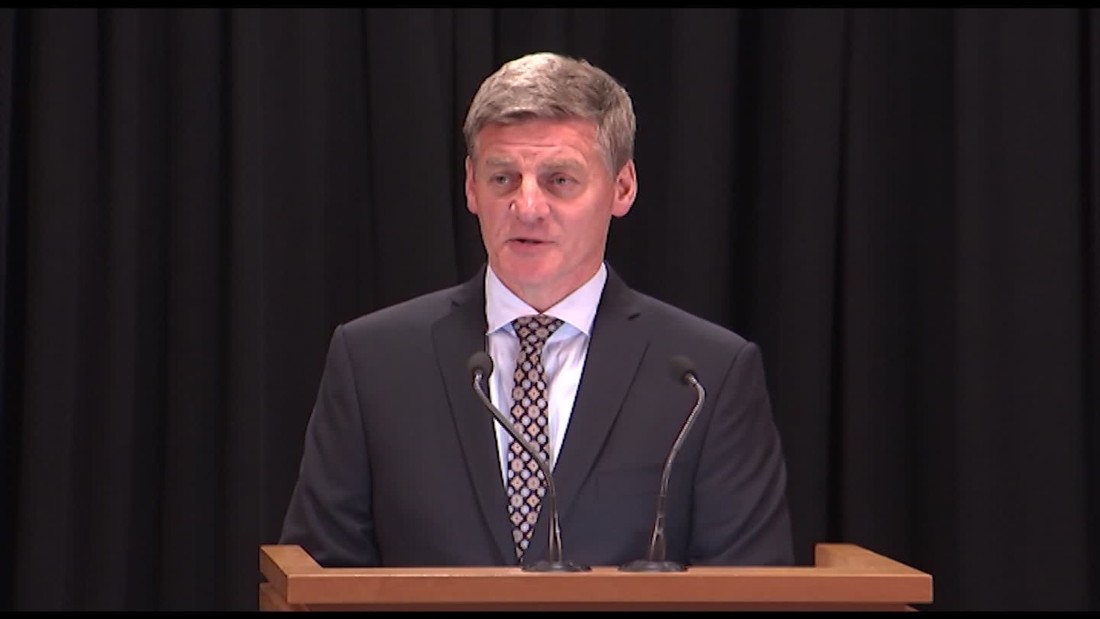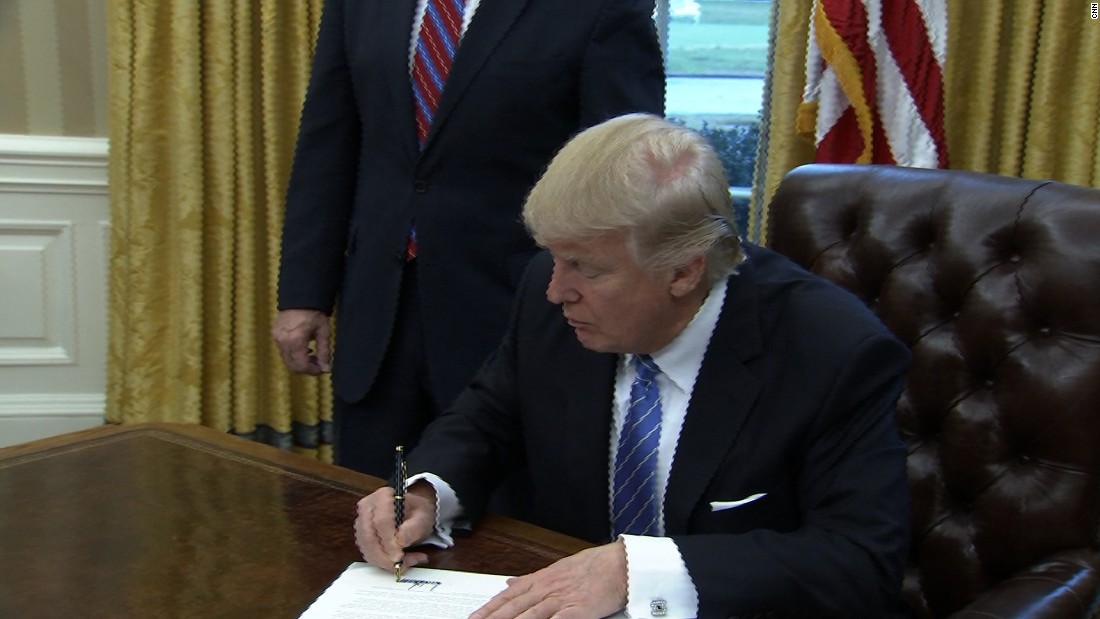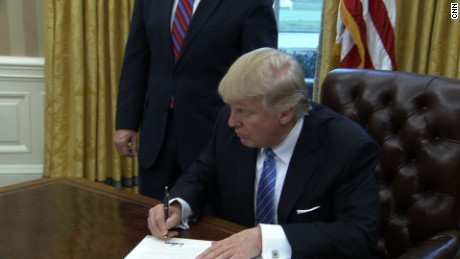TPP unravels: Where the 11 other countries go from here
Posted by John P. Bradford // January 29, 2017
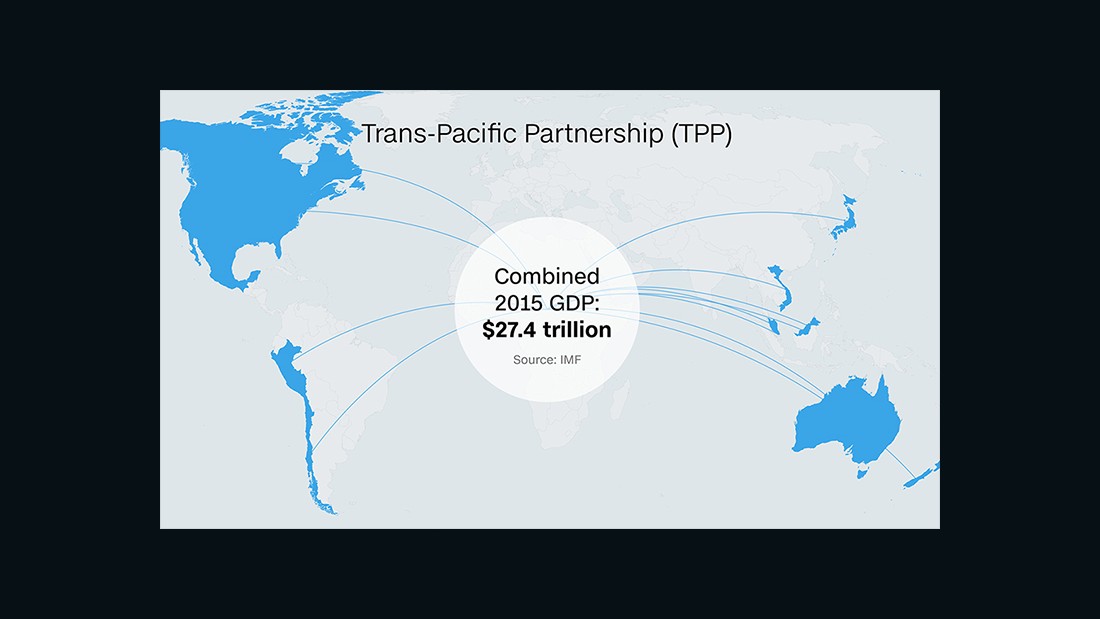
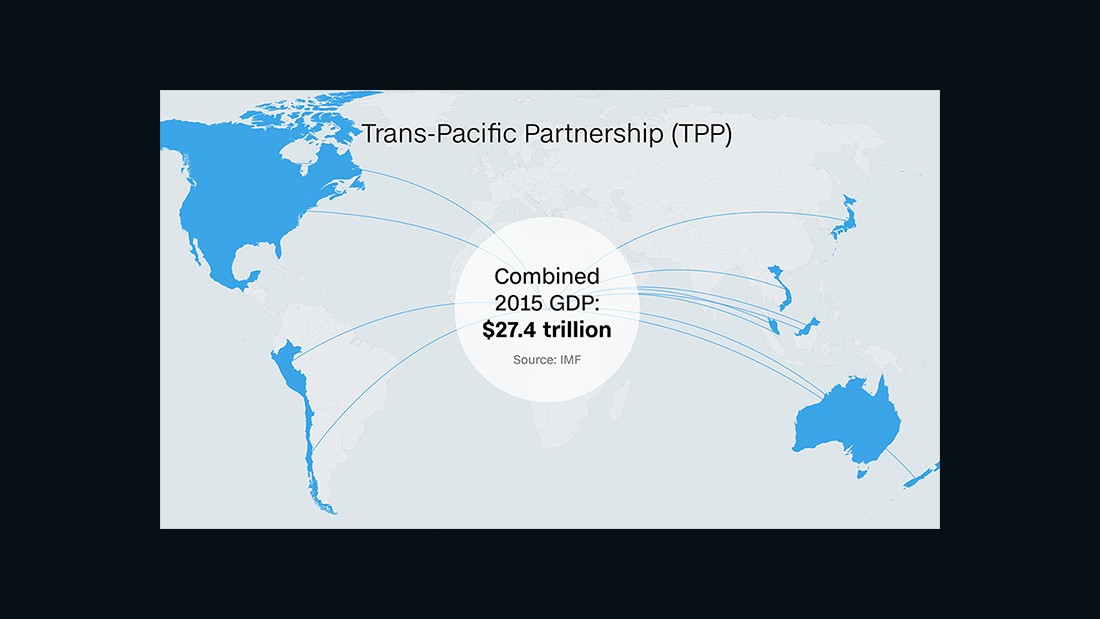
(CNN)US President Donald Trump dealt a death blow to the Trans-Pacific Partnership, a trade deal that was negotiated between 12 nations who represent more 40% of the global economy.
The other 11 countries knew this was coming — Trump excoriated the TPP, among other trade deals, on the campaign trail, saying that the deal would send jobs overseas and benefit special interests rather than American workers.
His election in November all but sealed the TPP’s fate, at least in its current form.
So what’s next for Australia, Brunei, Canada, Chile, Japan, Malaysia, Mexico, New Zealand, Peru, Singapore and Vietnam?
What’s in it for them
The biggest driver for most TPP participants was access to the valuable US market; America’s GDP accounts for 69% of the combined GDP of the 12-member bloc, Rajiv Biswas, IHS Global Insight’s Asia-Pacific chief economist, told CNN in an email.
Dairy, meat and agricultural products — especially in New Zealand and Australia — could have made their way to the US.
Japan, the next biggest market, would drop some of its protections on domestic meat and rice, which would be a boon for foreign exporters but may hurt domestic producers.
But it would also get access to new markets for its own products — notably automobiles.
“A number of Asian TPP signatories were expected to derive significant economic gains from the TPP and the final decision by President Trump to withdraw from TPP is a blow to their trade liberalization plan,” Biswas said.
Though free trade and tariff reduction was a big focus of the TPP, it also set out rules amongst participants on a host of economic industries, including forced labor, environmental laws and intellectual property rights, among others.
The vision was to set up a platform for cooperation that could eventually go beyond Asia,
according to the Brookings Institution’s Mireya Sols — it’s an “Asia-Pacific platform with aspirations to set global standards.”
“Its explicit aim to establish a trans-regional platform that bridges Asia and North and South America,” Sols writes. “It gives its rules and standards the opportunity to disseminate far and wide.”
It’s not a zero-sum game, but if you’re not at the table, you’re on the menu.
So by being one of the TPP’s first signatories, countries could help influence the rules, rather than be bound by them later on.
The full text of the agreement can be found here. A dedicated TPP website from the Office of the United States Trade Representative is no longer accessible; it now redirects you to the USTR homepage.
So is it dead?
In its current form, likely yes.
Despite the comments from TPP leaders eager to revive the agreement in some form, it won’t have the heft of the original.
“While the other 11 TPP members could create a parallel agreement without the US and move forward, the economic benefits will be significantly reduced without the US participating,” Biswas said.
“If the other 11 TPP members do decide to move ahead with TPP, it is possible that other Asia-Pacific countries could eventually join the TPP agreement, adding to its importance,” he added.
From a technical perspective, it’s nearly impossible to revive the TPP.
As
Matthew P. Goodman of the Center for Strategic and International Studies points out, Article 30.5 of the agreement requires that it be ratified by at least six countries who represent 85% of the TPP’s combined GDP.
That means that the US and Japan would both have to ratify the TPP in its current form for it to go into effect.
The other TPP countries could in theory go back to the drawing board and amend the agreement, starting with Article 30.5.
It wouldn’t be the TPP per se, but it would be similar.
Read more: http://www.cnn.com/2017/01/24/asia/tpp-other-11-countries-what-next/index.html

